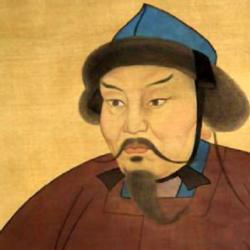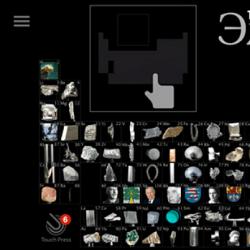Physical chemistry. Lecture notes. We invite you to participate! Theoretical and mathematical chemistry for schoolchildren. Eremin V.V.
The general recipe for preparing for chemistry Olympiads is very simple: read good literature and work hard - solve problems, analyze ready-made solutions, study the chemical properties of substances. We will give you a list of books with short comments and links to electronic resources. Of course, this list is far from exhaustive and not universal, but everything that is in it is guaranteed to be of high quality. Most books can be bought in bookstores, and some second-hand books can be downloaded from the Internet.
If we talk about specific Olympiads, the best way to prepare is to solve problems from previous years. On the Internet you can find complete tasks and solutions for almost any serious Olympiad in chemistry over the past 5-7 years. However, such an abundance of information does not always help; the experience of independent work may not be enough. We offer some tips for working effectively with problems and solutions:
- Take a complete set of assignments, set aside enough time (for example, a day off) and try to solve as many problems as possible. In any task, even if it doesn't work out completely, try to go as far as possible and record the question that you couldn't answer.
- After this, you can turn to solutions. As you analyze each task, write down for yourself in a separate notebook:
- New reaction equations you have learned;
- New chemical ideas you understood from the solution;
- New technical solutions (for example, the reaction equation in general form, a method for selecting variables, reasoned selection, etc.);
- Mistakes you made while solving.
Such preparation will take quite a lot of time, but it is the most effective. Then, leafing through the completed notebooks, you can easily refresh your memory of the necessary information. And this will not be just a superficial acquaintance with the right decisions, but a deep mastery of new material.
The only question remains: where to get so much time? The answer to this may be: there is always time, we just don’t always use it correctly.
Good luck in preparing and working with literature!
Where to begin:
Inorganic chemistry
- B.V. Nekrasov “Fundamentals of General Chemistry” (in 2 volumes, M.: Chemistry, 1973). One of the best Russian books on chemistry, an absolute classic. Encyclopedia of interesting inorganic chemistry, the best book on the chemistry of elements. The book is two-level. It is better for a novice chemist to read only large print. But the most interesting things are printed in small print. In some sections the book is a little naive from a modern point of view, but this does not detract from its value for aspiring chemists. The book can be found in used bookstores or downloaded from the Internet.
- E. A. Eremina, O. N. Ryzhova “Schoolchildren’s Handbook on Chemistry” (M.: Moscow State University Publishing House, 2014). The book was written according to the Moscow State University - School program. Initially, it was planned to help applicants entering Moscow State University, but it turned out to be very useful for preparing for the Olympiads. This book carefully selects the most important reactions of organic and inorganic substances, and also provides a simple description of basic physicochemical concepts.
- I. A. Leenson “Chemical elements” (M.: AST, 2017). A detailed guide to the periodic table, a kind of encyclopedia of the elements, compiled by one of the best popularizers of chemistry. The book is interesting for both beginners and professional chemists.
Organic chemistry
- I. I. Grandberg. “Organic chemistry” (4th ed., M.: Drofa, 2001). The number of reissues speaks for itself. This is a textbook for students, but it is written so simply and clearly that it will not cause difficulties for schoolchildren.
- V. M. Potapov. “Tasks and exercises in organic chemistry” (3rd ed., revised and supplemented, M.: Khimiya, 1989). Quite a simple, but very competent problem book, which contains a lot of tasks. Can be downloaded for free online.
Physical chemistry
- V.V. Eremin. “Theoretical and mathematical chemistry for schoolchildren” (2nd ed., M.: MTsNMO, 2014). One of the few books on physical chemistry available for schoolchildren. This is a problem book, but each section has a theoretical introduction. There is also an introductory chapter on mathematics. The great advantage of the book is that the tasks are divided into three levels, so it can be used to prepare not only for the international, but also for the school Olympiad.
Problem books
- V. V. Eremin, N. E. Kuzmenko “Collection of problems and exercises in chemistry. School course" (M.: Exam, 2008). A good collection of problems that can be used to prepare for entry-level Olympiads. A successful combination of calculations, quality tasks and chains of transformations. Each section is given a short theoretical introduction that can be usedlike a summary. The book is not for sale.
- N. E. Kuzmenko, V. V. Eremin, V. A. Popkov “Principles of Chemistry” (1-15 ed., M.: Exam, 2000-2013; 16th ed., revised and supplemented, M. : Knowledge Laboratory, 2016). Although the cover says “Textbook”, this is a guide for those entering universities. It went through more than 15 editions and became very popular. The book contains many problems and well-explained examples.
- A. N. Levkin, N. E. Kuznetsova “Problem book in chemistry” (for grades 9, 10 and 11, a separate book, M.: Ventana-Graf). Good collections of school-level problems. Many tasks are cognitive in nature. The level of difficulty of some tasks corresponds to the school or municipal stage of the All-Russian Olympiad for schoolchildren.
How to continue:
Inorganic chemistry
- Edited by Yu. D. Tretyakov “Inorganic chemistry” (in 3 volumes, M.: Academy, 2004-2007). University textbook written by Moscow State University teachers. Many sections are accessible and useful for schoolchildren, but in general it is quite complex and is best addressed to solve individual issues rather than for systematic work.
- N. Ya. Turova “Tables and diagrams for inorganic chemistry” (M.: MTsNMO, 2009). The legendary reference book on inorganic chemistry. Available online.
- N. N. Greenwood, A. M. Earnshaw “Chemistry of elements” (in 2 volumes, M.: Binom. Laboratory of Knowledge, 2015). One of the best foreign textbooks on inorganic chemistry. An excellent addition to the three-volume edition edited by. Tretyakov.
Organic chemistry
- J. March “Organic chemistry: reactions, mechanisms and structure” (in 4 volumes, M.: Mir, 1987). A classic book on organic chemistry, well suited for advanced students. You can buy it at second-hand bookstores or download it for free online. In 2019, the Laboratory of Knowledge publishing house published a 4-volume edition of March's Organic Chemistry. Reactions, mechanisms, structure.
- N. A. Tyukavkina, Yu. I. Baukov “Bioorganic chemistry” (3rd ed., M., Bustard, 2004). A generally accepted textbook for medical schools. For advanced students - one of the best publications on biochemistry.
Problem books
- A. Z. Lisitsyn, A. A. Zeifman “Very non-standard problems in chemistry” (M.: MTsNMO, 2015). The collection contains more than 500 non-standard problems in inorganic, organic and physical chemistry. The problems are divided into several difficulty levels, and all problems have answers and/or instructions. The collection is intended, first of all, for additional classes in chemistry at school: preparation for olympiads, school clubs, it will be of interest to everyone associated with chemistry and interested in beautiful and unusual chemical structures and transformations.
Popular and non-fiction books on chemistry
- Encyclopedia for children. Volume 17. Chemistry (M.: Avanta+, 2000, 2007, 2010). A wonderful book on chemistry for children and adults. Very interesting articles, covering all the main sections of chemistry, excellent illustrations, excellent Russian language. The book is good for both beginners and those who already know something. Any chemist should have this book on their shelf.
- M. G. Voronkov, A. Yu. Rulev “About chemistry and chemists both jokingly and seriously” (M.: Mnemosyna, 2011). A collection of interesting and funny stories about chemical discoveries and chemists in life. This is not a collection of scientific jokes, but a good guide to the history of chemistry, which presents only carefully verified facts. This book will be interesting to read - both for schoolchildren and their parents.
- A brief moment of triumph (M.: Nauka, 1989). A book about how great discoveries were made - in chemistry, physics, biology. It is for those who are going to professionally engage in science and benefit humanity. The book is a second-hand book, it is not in stores, but it can be downloaded from the Internet.
4 more books
- I. S. Dmitriev, K. M. Nikitin “Dmitry Mendeleev. The author of the great law" (M.: Ast-Press, 2013). Book from the “Guide to the History of Russia” series. A short, but very informative and reliable biography of the most famous Russian scientist in the world - D. I. Mendeleev. Not only the outstanding achievements of the scientist are described, but also his searches and failures in science, public and personal life.
- Simple science. A set of books containing descriptions of simple and very entertaining experiments in physics and chemistry. Great books to get kids interested in science.
- I. M. Titova “Chemistry and art. 10-11 grades" (textbook, M.: Ventana-Graf, 2007). A book for people who want to get a broad education. The interaction between science and art is very interestingly shown - two fundamentally different ways of understanding the world. An excellent example of how chemistry manifests itself in areas far from science.
- V. V. Eremin “Mathematics in Chemistry” (Moscow: MTsNMO, 2011). A book for schoolchildren with a physical and mathematical mindset. Describes how mathematics is used to solve chemical problems. The restrictions imposed by the laws of chemistry on mathematical equations are discussed.
Olympiads and preparation sites
- in all subjects.
- http://www.chem.msu.ru/rus/olimp/ - information materials about Olympiads: Moscow, All-Russian, Mendeleev, international. The problems of theoretical and experimental rounds, detailed solutions, lists of winners and photographs are given.
4 more sites
- Lomonosov Olympiad in all subjects. Requires registration.
- Materials of the All-Siberian Open Olympiad in Chemistry.
- http://chem.dist.mosolymp.ru/ is a distance learning system aimed primarily at preparing for Olympiads of all levels - from school to international. Contains a huge number of tasks, grouped both by topic and by Olympiad. Theoretical material is presented for all main sections of chemistry and solutions to typical problems are analyzed. The system is free, but requires minimal registration.
Internet resources
- Popular science project “Elements of Big Science” (physics, chemistry, mathematics, astronomy, life sciences, Earth sciences). Science news, books, popular science articles, lectures, encyclopedias.
- Popular science magazine "Potential". The magazine has been published since 2005, the “Chemistry” section - since 2011. In it you can find textbooks on general and inorganic chemistry, organic chemistry, multimedia materials, problems of chemical olympiads with solutions, problems of entrance exams for applicants, materials for teachers on psychology and pedagogy, bright thematic collections of videos and interactive 3D illustrations.
But this is not the only science that developers are working to popularize today. And, of course, their attention did not pass by chemistry - an interesting science about the structure of substances, which usually causes horror in children of incomprehensible elements and formulas. But it seems that, as always, it’s a matter of approach. Perhaps, if you diversify the study of the periodic table using various games and introduce children to the concept of chemical valency using a colorful and understandable application, then the subject itself will not seem boring or inaccessible to them. So we bring to your attention a selection of applications and games for studying chemistry.
An app for learning about chemical elements, which the English writer and actor Stephen Fry once described as follows: “This app is worth buying an iPad for!” The Elements is a unique database of basic chemical elements presented in the form of high-quality 3D models. The app is based on the book The Elements by Theodore Gray, author of the Gray Matter column in Popular Science Magazine, but The Elements' capabilities extend far beyond the print edition.

For each element, an example is selected, which is presented in the form of a rotating 3D model (for example, a tin soldier - for tin, a gold bar for gold, etc.), which you can independently launch, turn over, enlarge - in general, explore from all sides . Next to each element there is a column of data and facts that tell in detail about its features. The developers characterize their product this way:
The Elements is not a help application; is a rich and fascinating love story of the periodic table, told in words and pictures, allowing you to experience the beauty and majesty of the building blocks that make up our Universe like never before.
Repeatedly voted one of the best programs for learning chemistry, The Elements costs only $4.99. The application can be downloaded from iTunes. Unfortunately, the video review is only available in English, but even the visuals are enough to understand how good this program is.
In this free application you will find 3D models of various substances. Molecules has several visualization modes that allow users to rotate models, change the scale of the molecule, increase/decrease size, etc. The application itself has a very decent database of molecular models, but at the same time the user has the opportunity to download examples from specialized sites for international repositories of biological molecules and their three-dimensional models. To do this, you need to enter the name of the substance in the search bar (Water, Gold, Insulin, etc.). Of course, comprehensive information is presented here about each molecule and molecular compound: the full name of the molecular structure (do you remember that most often substances are called abbreviated, and the full name is usually known only to specialists?), the number and types of amino acids in the case of proteins, nucleotide sequences for DNA and RNA, names of compound researchers and much more. The app is available on iTunes.

Created by a Michigan chemistry professor, this app helps users understand how molecules fit together. Gameplay consists of five levels, each of which requires the player to make 2D Lewis dot structures. Anyone who completes the task will be rewarded by turning the 2D structure into a 3D model. In addition, at the end of each level, the application will give you a philosophical rhetorical question about the structure of the Universe and its substances, so that even if you fail to comprehend valency, the philosophy of chemistry will become a little closer to you. You can download Chemical Valence from the App Store for $0.99.

This is a kind of virtual chemical laboratory in your mobile device. Here you can conduct experiments with various substances and observe the most unexpected reactions. As you understand, in virtual space you can even experiment with explosives and radioactive substances. The results of the experiments are simulated in real time, and the program takes into account a bunch of parameters: air composition, ambient temperature, mass and volume of mixed substances, etc. To make the task easier for a novice chemist, the application provides a database of basic reactions for each substance from the periodic table. However, you can “chemically” and discover your own reactions. Chemist Lab is available on iTunes and costs $4.99. But there is also a free trial version.
Do you think it's another chemical laboratory? You guessed wrong! Chem Lab is a fun quiz that will test your knowledge of basic chemical formulas. The user is asked to perform 5 tasks in turn (drag the necessary elements into a test tube to produce gas or combine suitable substances, etc.). At the end of the experiments, the required results for each task are shown and compared with your achievements. Be careful - if the reaction is unsuccessful, something may explode or catch fire. Of course, working in the application is safe, but the explosion at least indicates that in reality it is not worth repeating such an experience. The app is available in the App Store and costs only $0.99.

Talking Ben the Dog is a game for little ones. Talking dog Ben is a retired chemistry professor who is pretty tired of life. All he does is eat, drink and read newspapers. You can try to stir him up, or you can simply press the “Chemistry” button and send the old professor to the laboratory to conduct simple chemical experiments with him (mix two liquids and observe the reaction). Nothing particularly educational, but at least the child learns that mixing two substances can lead to an unexpected reaction. This seems like a good start for telling a child about chemistry as a science. The app is available for free on iTunes and Google Play.

Another tool for studying chemistry, which allows you to get acquainted with the activity of elements, study redox reactions, solve chemistry problems, obtain final reaction products and equalize coefficients. The appendix contains a description of the reactions of more than one and a half thousand chemical compounds. The application interface is extremely simple, as is the work in it: to react, just select the necessary elements from the table and connect them. The application can be downloaded from Google Play for free.

Application-game for studying chemistry. Now you don’t need to force your child to cram chemical elements; just install Elements Quiz, where the periodic table is studied in a simple game form. The basic rules of the game are to look in the table for chemical elements suggested by the program. What could be simpler? But in the process of such a search, the child gradually remembers the name of the element, its symbol and place in the table - those basics that are necessary for further successful study of the subject. For more advanced users, the app has built-in quizzes that are not that easy to master. In addition, the application is linked to Wikipedia, so you can always get additional information about a particular element in the free encyclopedia.

This is an application that allows you to easily draw formulas of organic compounds. But, as users note, it is impossible to describe and depict full-fledged reactions in the program, so MolPrime+ can only be used as a formula editor for now. By the way, it’s easy to share your achievements in the application with friends via Twitter and email, so you can compete in skill. MolPrime+ is easy to download from
Theoretical and mathematical chemistry for schoolchildren. Eremin V.V.

M.: 2007 - 392 p.
At the school level, interdisciplinary connections between chemistry and other sciences are shown. The main areas of application of elementary mathematics and theoretical physics to chemical phenomena are considered. Each section of the book contains detailed theoretical material, analyzed problems and problems for independent solution. Answers are provided for all problems. The book is intended for in-depth study of chemistry in high school, as well as for preparation for chemistry Olympiads at various levels - from school to international. It may be useful to anyone interested in chemistry and its many applications.
Format: pdf
Size: 8.1 MB
Watch, download:drive.google
TABLE OF CONTENTS
Preface 4
Chapter 1. Elementary mathematics in chemistry 5
§ 1. The role of mathematics in chemistry 5
§ 2. Calculations and estimates 6
§ 3. Algebra 12
§ 4. Geometry 20
§ 5. Elements of mathematical analysis 26
§ 6. Elements of combinatorics 35
§ 7. Computer mathematics in chemistry 40
Literature 43
Chapter 2. Structure of atoms and molecules 45
§ 1. Origin of atoms and molecules 45
§ 2. Structure of atomic nuclei. Nuclear reactions 50
§ 3. Elementary concepts of quantum mechanics 63
§ 4. Electronic configurations of atoms 90
§ 5. Chemical bonding and structure of molecules 120
Literature 143
Chapter 3. Chemical thermodynamics 145
§ 1. Thermal effects of chemical reactions 147
§ 2. Second law of thermodynamics 160
§ 3. Phase equilibrium and phase transitions 178
§ 4. Chemical equilibrium 186
§ 5. Energy and velocity distributions 226
§ 6. Electrochemical circuits 232
§ 7. Thermodynamic properties of solutions 250
Literature 262
Chapter 4. Chemical kinetics 263
§ 1. Law of mass action 264
§ 2. Dependence of reaction rate on temperature 276
§ 3. Complex reactions 291
§ 4. Catalysis 340
§ 5. Photochemistry 366
Literature 392
Here is an unusual book about chemistry. There are quite a few chemical formulas in it, but there is an abundance of mathematical symbols, equations and graphs of functions. Here you can find many physical concepts, for example “quantum”, “photon”, “heat”. And yet, chemistry comes first in the book. Mathematical methods and physical theories play only a utilitarian role here: they help describe chemical substances and reactions between them.
The main objective of the book is to show that chemistry is inseparable from mathematics and physics. Chemistry has no laws of its own. All laws of chemistry, such as the periodic law or the law of conservation of mass, have a physical nature. The basic theories of chemistry also come from physics, these are quantum mechanics, kinetics and thermodynamics (the last two are used with the word “chemical”); all of them are discussed at an elementary level in this book. And yet, chemistry is an independent science. The main thing that distinguishes it from other sciences is the variety of objects studied: more than 20 million individual substances alone are known, not counting numerous mixtures. Physics studies what nature has given, and chemistry studies what it creates itself, that is, new substances that did not exist in nature. Modern chemistry closely interacts with other areas of natural science. The most interesting things in science today happen at the interdisciplinary level, at the boundaries between chemistry, physics, mathematics and biology. This is what our book is about.
It is intended for schoolchildren with a penchant for natural sciences. The book is based on Olympiad problems at various levels, from regional to international. Many problems are given with detailed solutions, and answers are given to all calculation problems. Each paragraph begins with theoretical material, which can be interesting in itself, and not just in connection with solving problems. The book can be used for additional classes in chemistry, independent work, and preparation for chemistry Olympiads. It has a clear physical and mathematical character, but is still intended for young chemists - those who will determine the face of chemical science in a couple of decades.
I really want these to be erudite and broad-minded people, capable of applying in chemistry all the best that has been created by friendly sciences. This is why this book was written.






